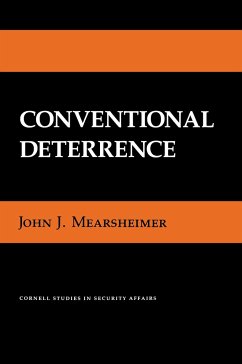
Elements of Deterrence
Strategy, Technology, and Complexity in Global Politics
Versandkostenfrei!
Versandfertig in über 4 Wochen
35,99 €
inkl. MwSt.

PAYBACK Punkte
18 °P sammeln!
Deterrence theory emerged during the Cold War in response to the threats posed by nuclear weapons. Today, strategists must consider many other threats, such as cyber attacks, drones, space weapons, and subversion, all within a highly interdependent global economy. While many policymakers aspire to create integrated deterrence strategies, deterrence is not a panacea for complexity. Elements of Deterrence presents detailed arguments and empirical evidence demonstrating that the practice of deterrence involves complex trade-offs between multiple political goals and specialized military instrument...
Deterrence theory emerged during the Cold War in response to the threats posed by nuclear weapons. Today, strategists must consider many other threats, such as cyber attacks, drones, space weapons, and subversion, all within a highly interdependent global economy. While many policymakers aspire to create integrated deterrence strategies, deterrence is not a panacea for complexity. Elements of Deterrence presents detailed arguments and empirical evidence demonstrating that the practice of deterrence involves complex trade-offs between multiple political goals and specialized military instruments. The result is a new synthesis of venerable themes in deterrence theory.












